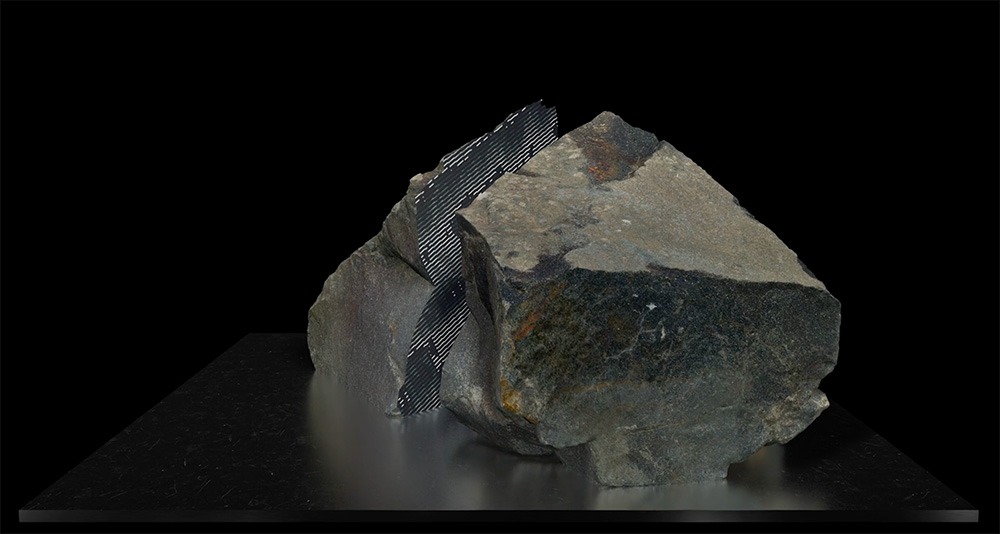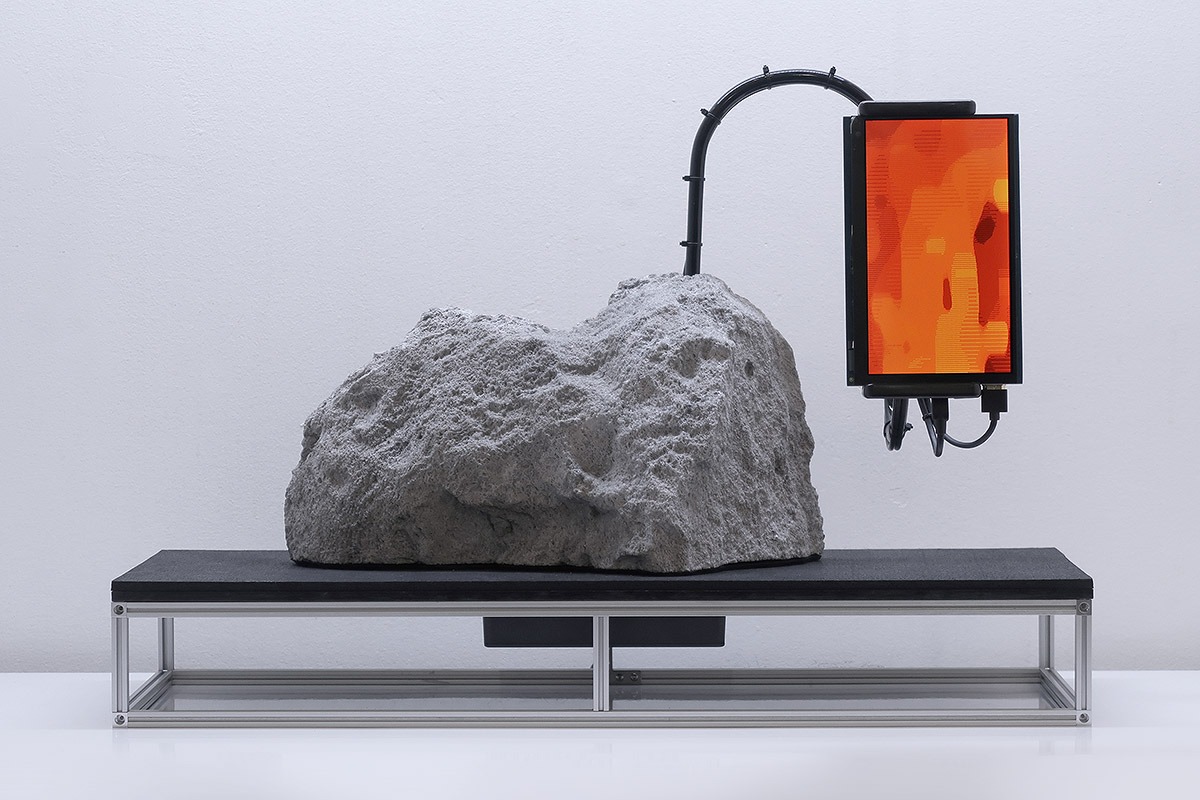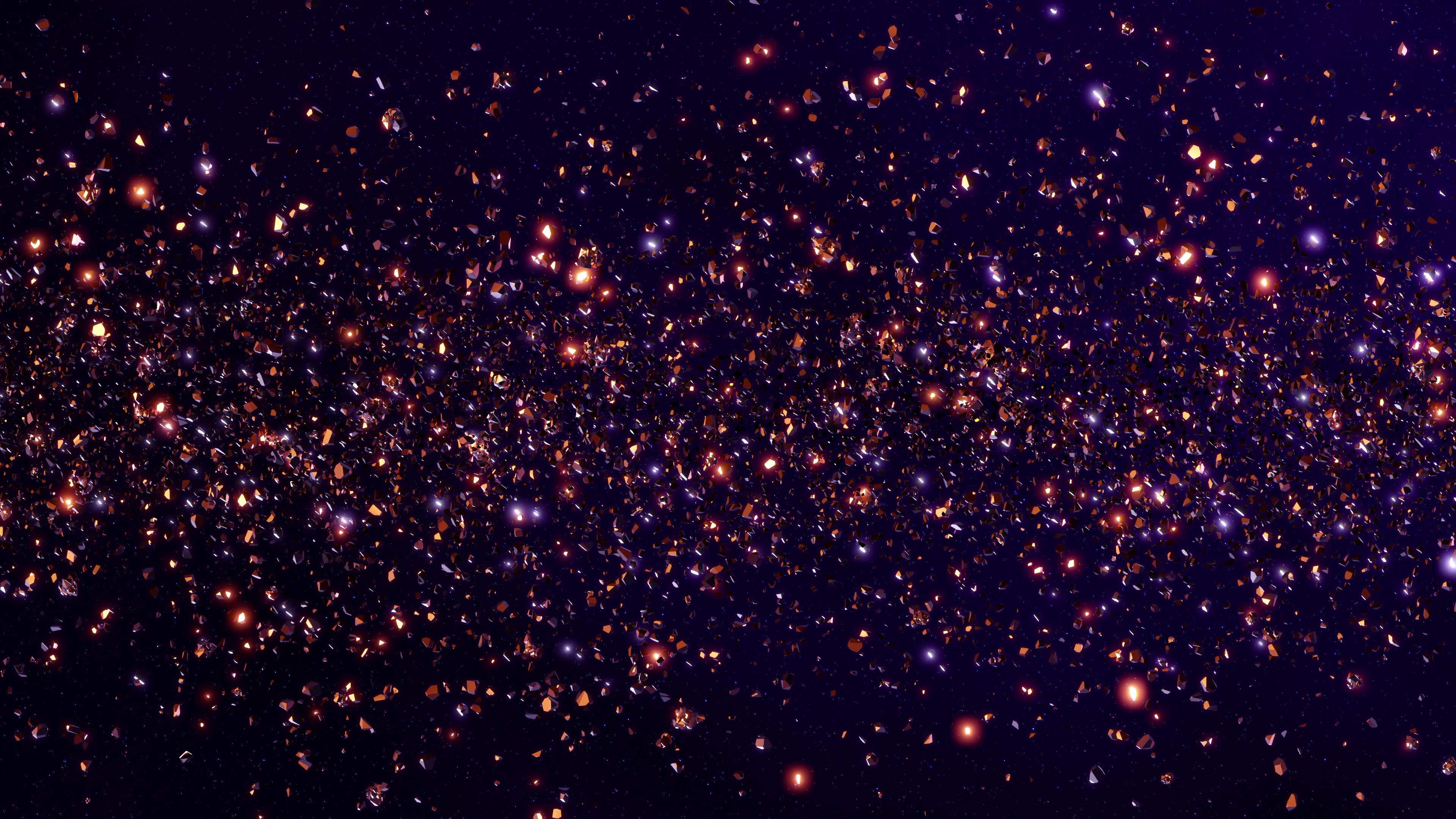
Courtesy the artist
Kelly Richardson, Nicolas Sassoon & Rick Silva
REVENANTS
Opening Friday 20 January, 5–8pm
Gallery Walk Downtown 21 January, 2pm
21 January – 20 February 2023
Open Thursday, Friday and Saturday, 2–6pm
Waldburger Wouters Gallery
Bd d’Anvers 49, 1000 Brussels
Rectangle is pleased to present REVENANTS, a collaboration with
Kelly Richardson, Nicolas Sassoon and Rick Silva.
Scale is everything. What may look like a solid upon closer inspection turns out to be a void. Lights in the night sky that to us appear as stars may instead be expansive galactic clouds housing multiple galaxies.
Charles and Ray Eames’ iconic production ‘The Powers of Ten’ (1977) takes us from our tangible human scale – a lazy Sunday picnic scene in a park – to the incomprehensible vastness of space and beyond back, all the way to the sub-atomic realm. At the 24th power of ten, after flying past galaxy clusters, we reach the limit of the known universe in 1977 – 100 million light years away. We’re left with a black screen, and the voice-over cheerfully announces: “This emptiness is normal”.
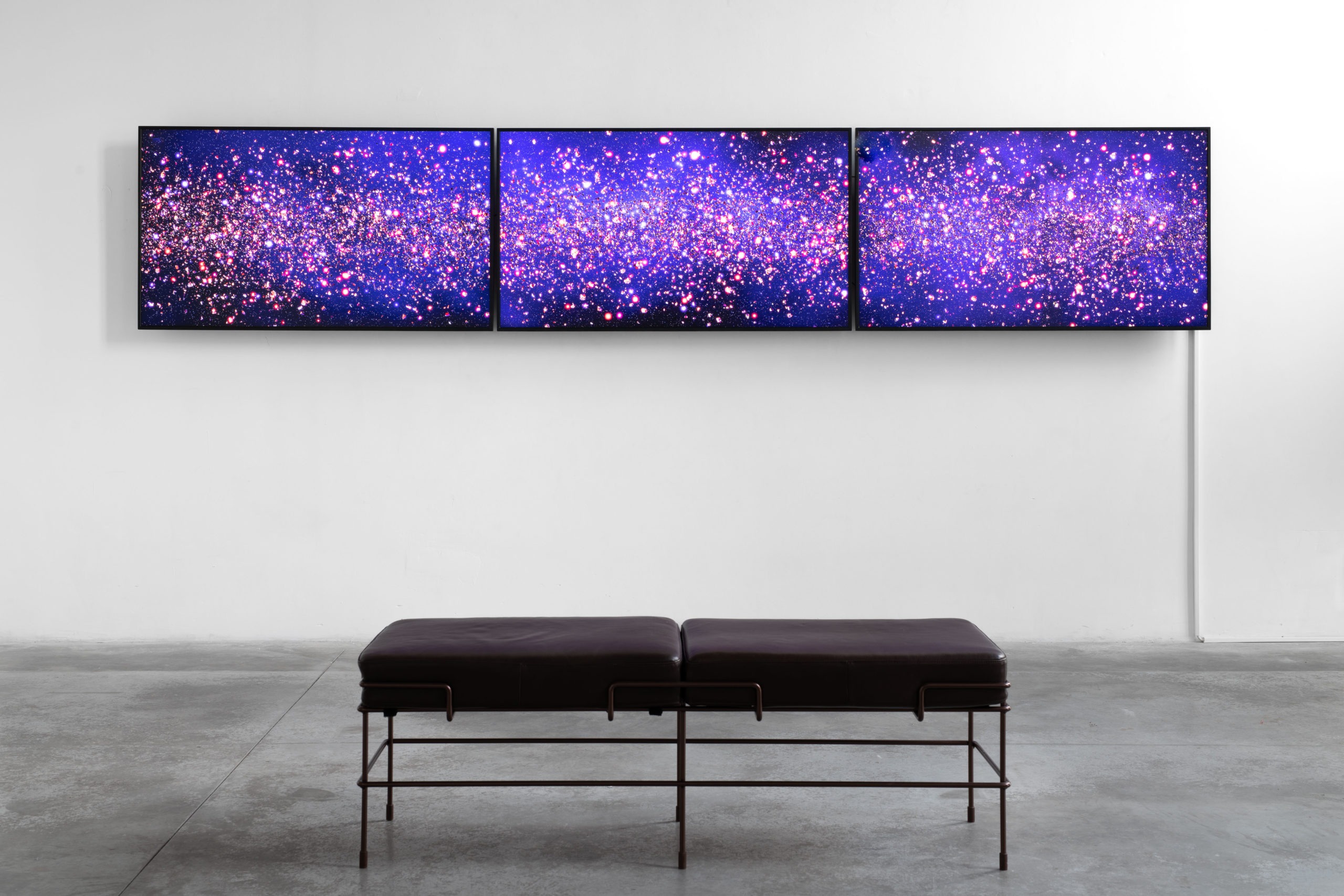
Kelly Richardson
Origin Stories
2023
HD, 30 second seamless loop triptych
Edition of 25 (NFT)
This is by no means a hollow statement, because after zooming back in through all powers, and diving into our cellular structures, this emptiness is eerily reflected on the microscopic level of the 10th power of minus ten, at 0.01 angstrom.
A similar disorienting sense of relativity can be applied to time: we may notice our Earth’s crust’s movements sometimes as hiccups in the form of volcano eruptions or earth quakes. Despite their potential significant regional impact, they only suggest minor movements on a planetary scale. We tend to think of the planet as fairly stable grounds, but experienced in deep time, Earth behaves more like a boiling, chunky stew. Glaciers flow like syrup, islands pop up and vanish, coastlines fold out of sight, mountain ranges rise sharply and erode into friendly hills, and whole seas evaporate while other basins are being filled. It’s all very exhilarating.
Our current, surprisingly cuddly, upper layer of life wouldn’t have been possible if not for the violent bombardments of meteors our younger planet had to endure. From destruction, an incredibly complicated and elegant biosphere emerged. It’s the conundrum at the roots of myths and at the hearts of circular belief systems.
We’re usually only reminded of our planet’s inner workings when disruptive pyroclastic clouds cancel our flights. Nicolas Sassoon’s ‘Prophets’, sculptures series is literally based on lava rocks, and offers us a view on their own origins. It’s as if these antenna’ed creatures are here, in possibly the least geological space in existence – a contemporary art gallery – to gently remind us of the unimaginable turmoil that is in a constant grind beneath our feet.
Kelly Richardson, on the other hand, transports us out of our troubled atmosphere all the way to the 11th power of ten, and provides us with a breathtaking view on the asteroid belt in our solar system. We find ourselves in a region between Mars – a planet Richardson previously visited in the monumental installation, ‘Mariner 9’ – and Jupiter. The countless slowly rotating bodies appear as crisp as if we’re looking out of the windows of a space ship; all potential new Chixculub impactors – named after the meteor that helped to end the reign of the dinosaurs which resulted in the rise of mammals, including us. The cool light bouncing off of the indifferent chunks of space debris is a distant counterpart of the glowing embers dancing in some of Richardson’s other virtual camera frames.
When we return to the human power of one, we’re left with the realisation that while our species’ behaviour is responsible for the current global extinction event, it’s equally capable of producing uniquely imaginative visions. Art alone can’t save the world but the creation of art may very well be considered as the yin to our destructive yang.
This emptiness is normal.
Text by Alexandra Crouwers.
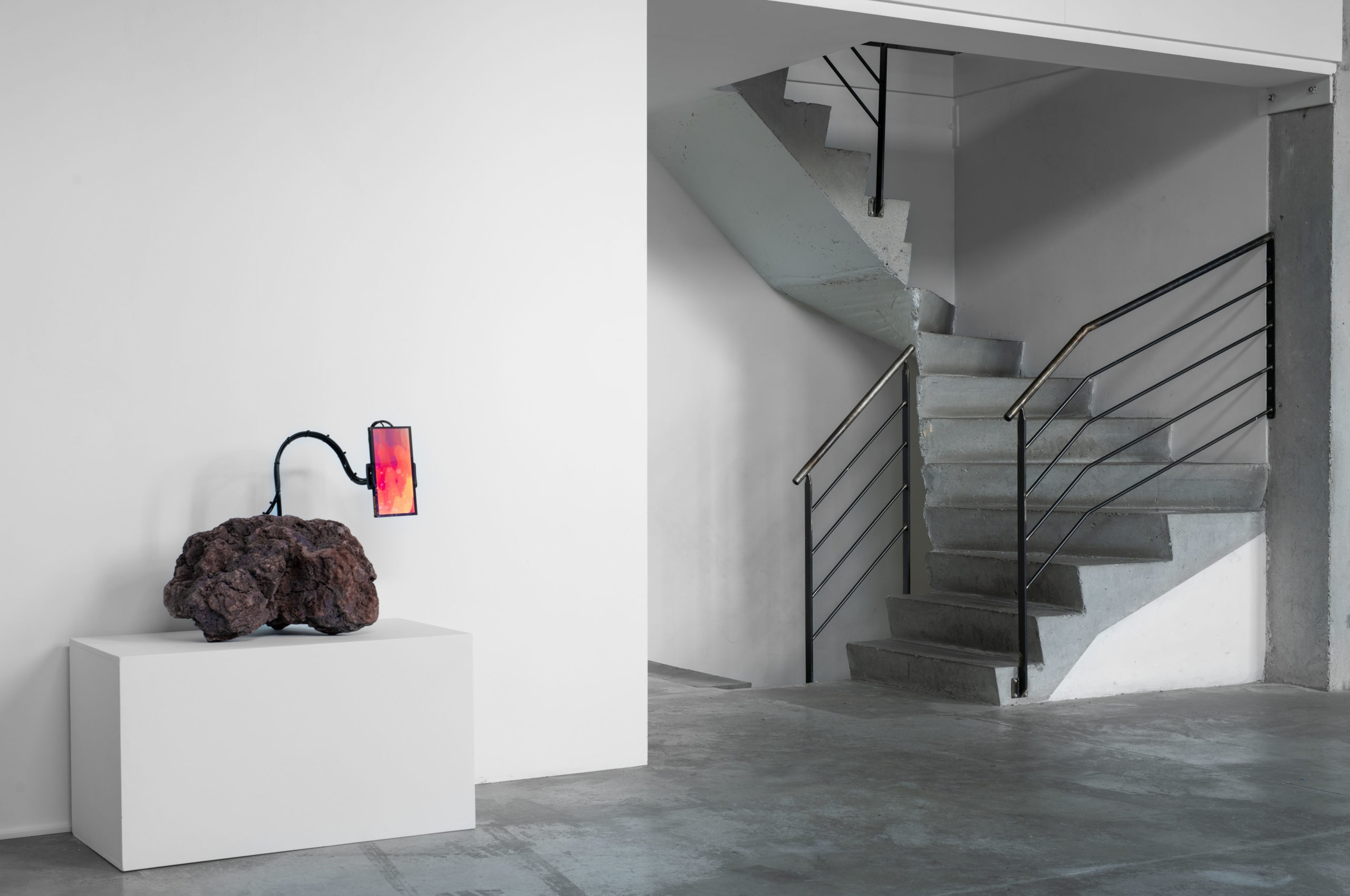
Courtesy the artist
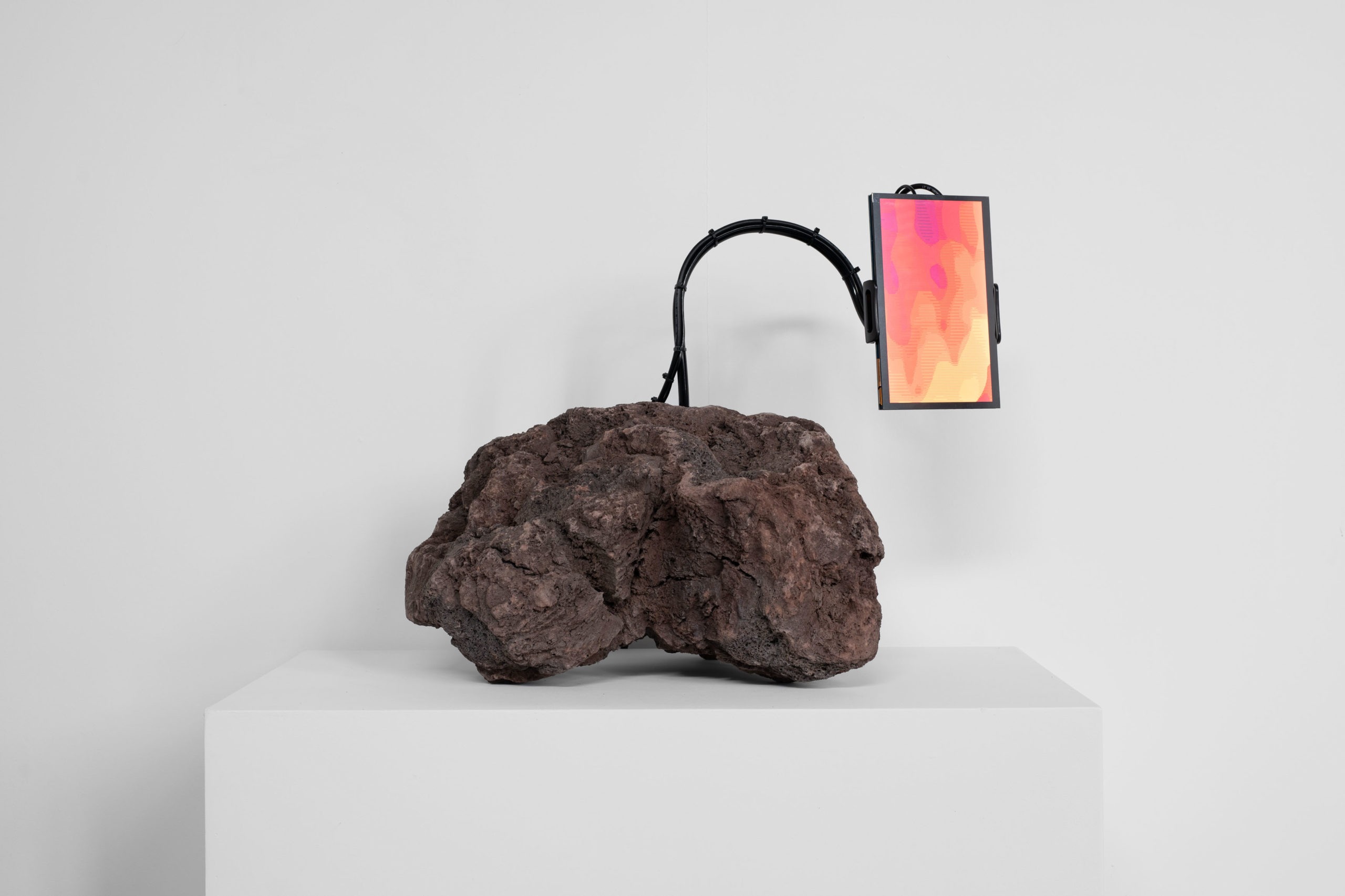
Nicolas Sassoon
The Prophet (Tanaga 1)
2023
rock, lcd screen, variable dimension
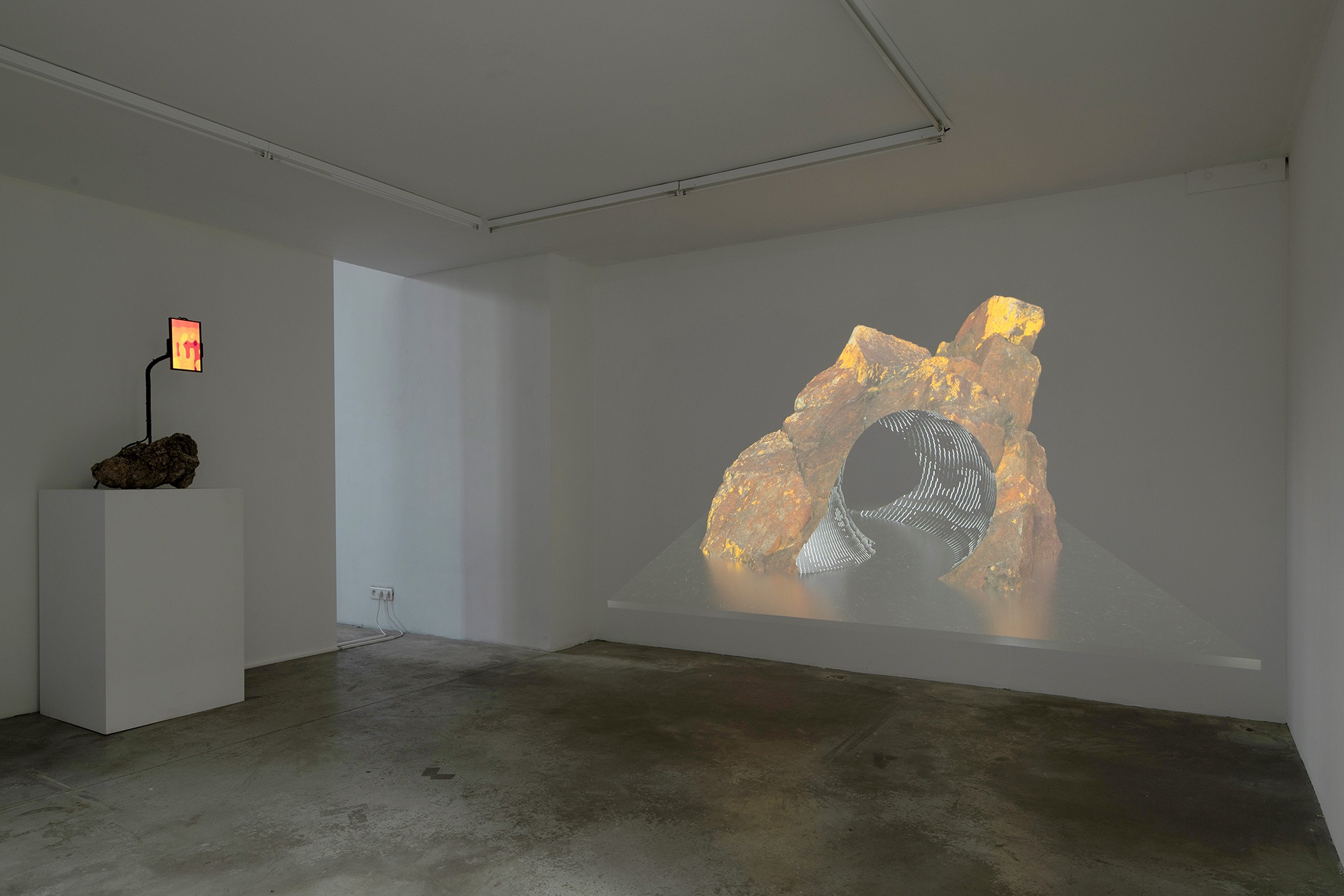
Nicolas Sassoon, The Prophets (Tanaga 02), 2023 (left)
Courtesy the artist
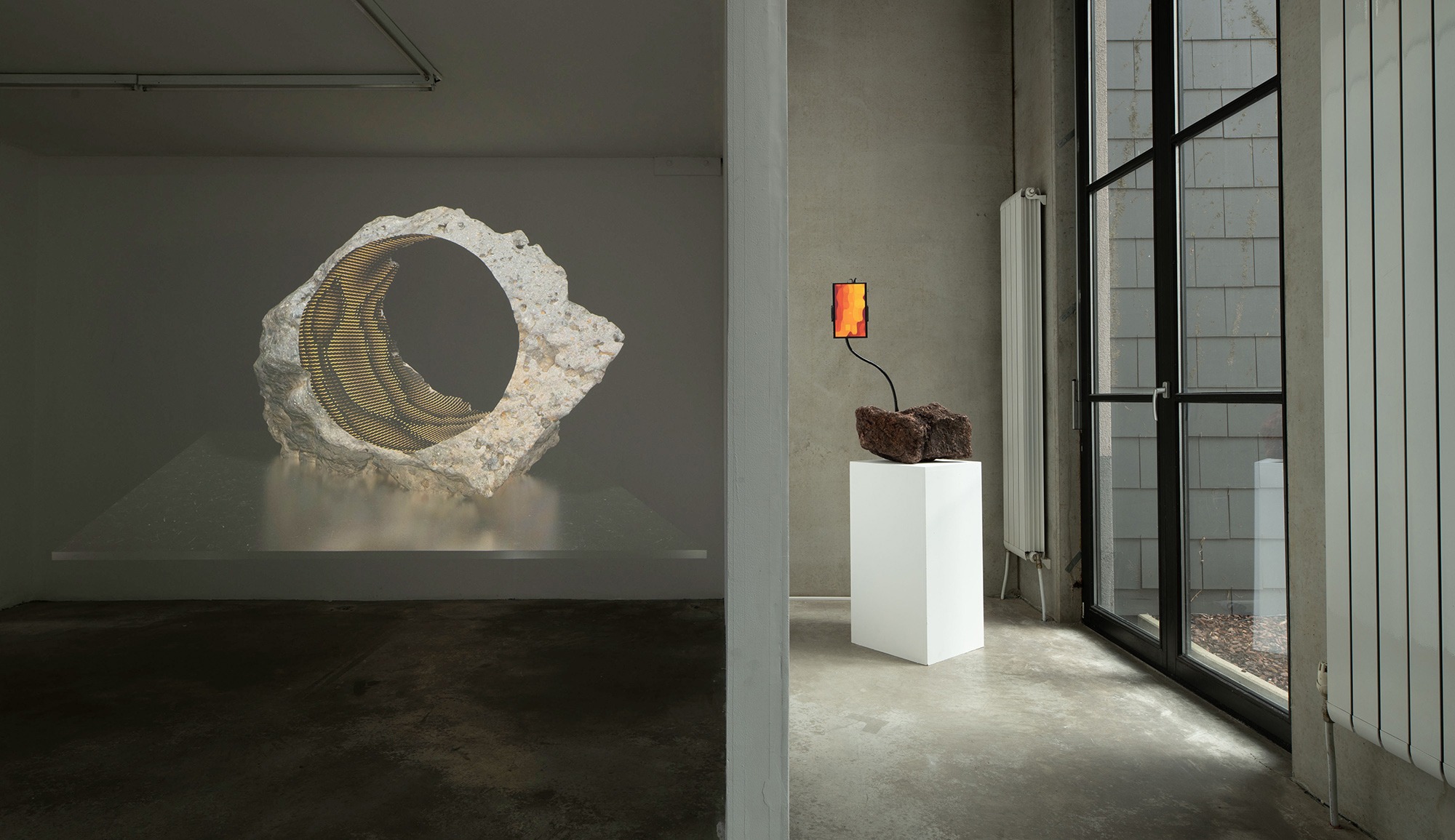
Nicolas Sassoon, The Prophets (Tanaga 03), 2023 (right)
Courtesy the artist
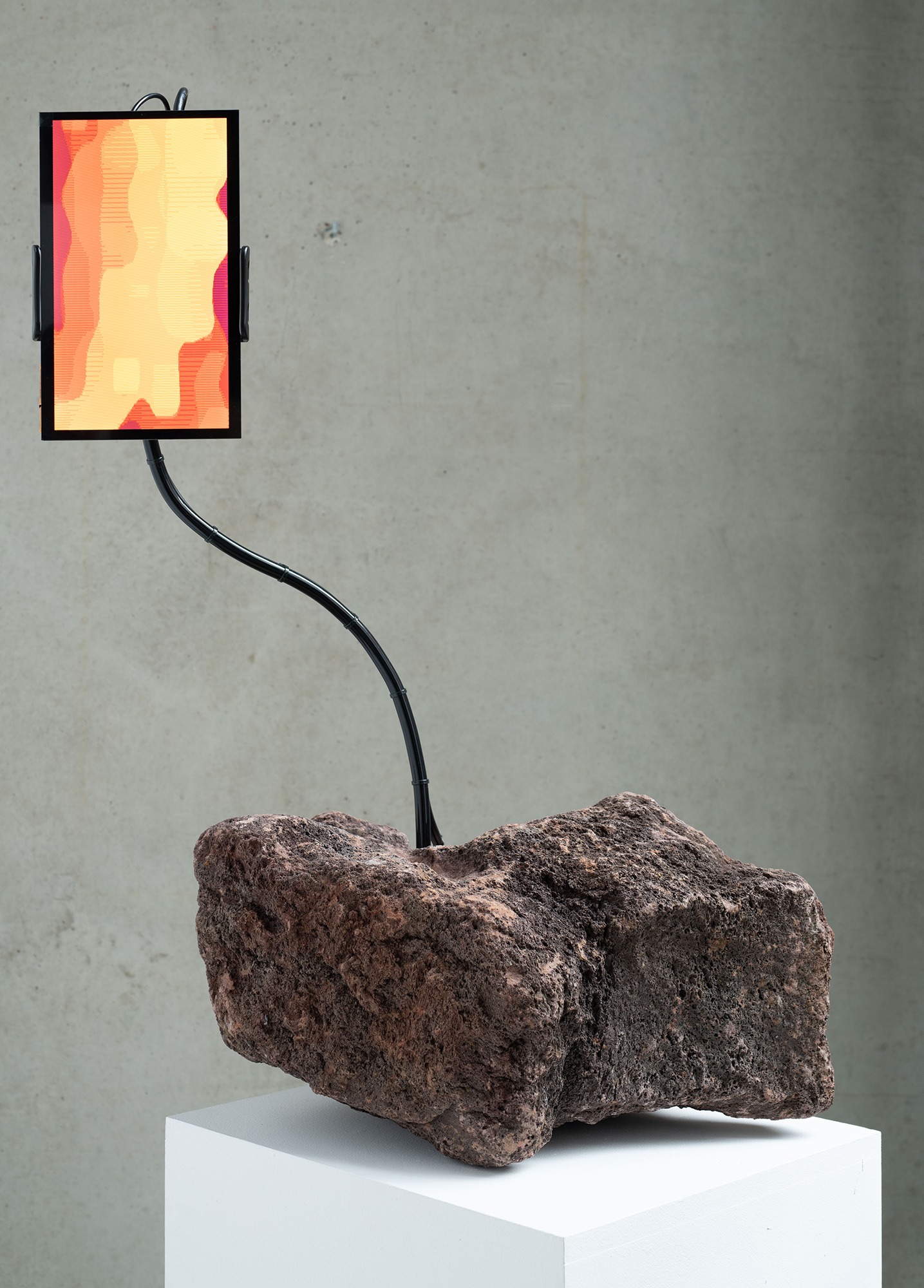
Nicolas Sassoon
The Prophets (Tanaga 03)
2023
rock, lcd screen, variable dimension
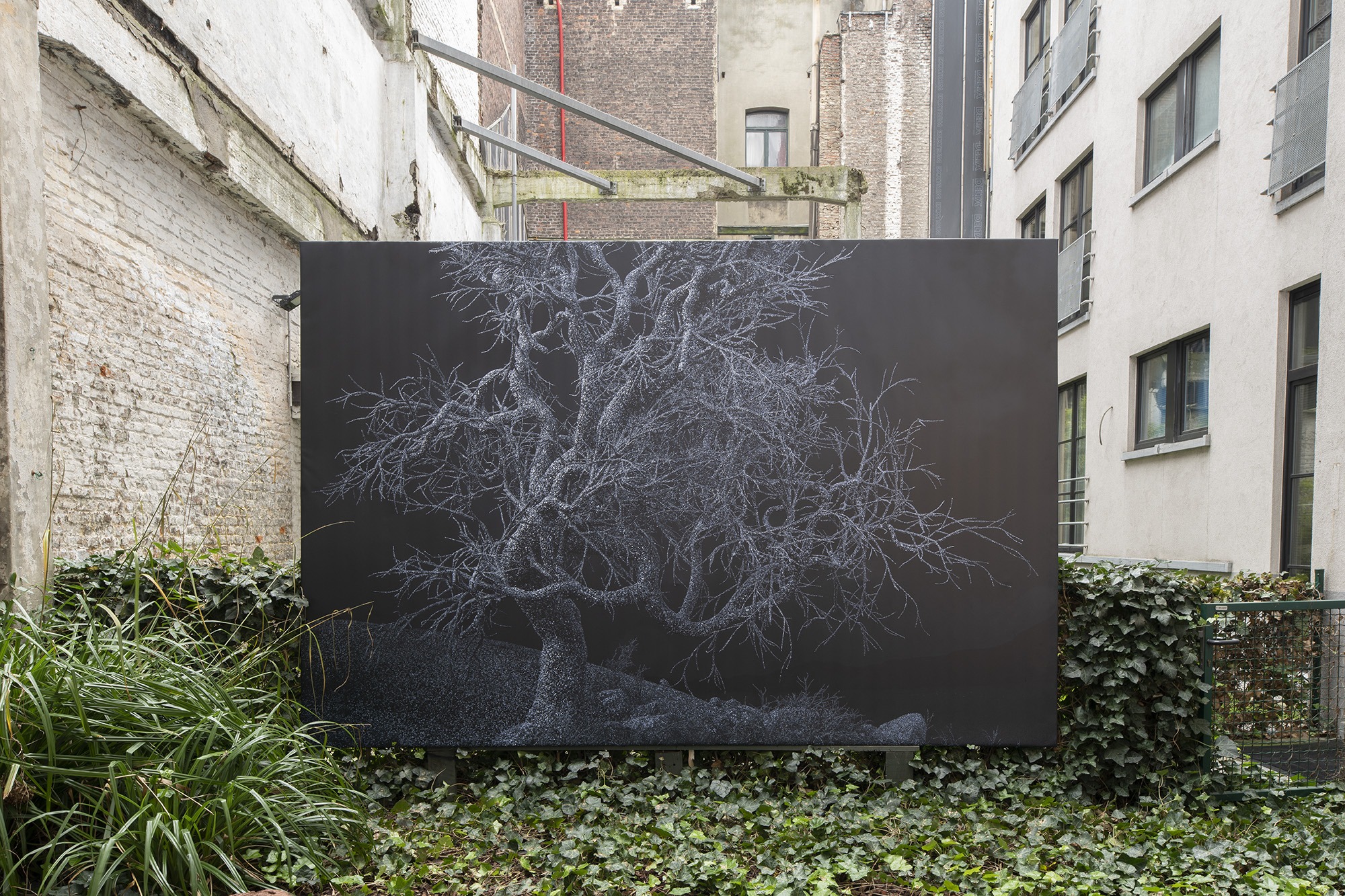
Kelly Richardson
Pillars of Dawn (single, IV)
2021
Edition of 100 (NFT)
Works

Kelly Richardson
Origin Stories
2023
HD, 30 second seamless loop, triptych
Edition of 25
(NFT)
Origin Stories carries on ideas explored in previous works where extinct species have taken the form of crystals. It is as though complex life has been transformed into pure carbon – that is, into the most concentrated forms of pure carbon in the natural world – diamonds. Set against the stars, the majesty and infinite wealth of our home is revealed within the context of the known universe – where as far as humanity has confirmed, Earth is the only known planet to foster life. With monumental efforts to discover life elsewhere, how differently would we value any of the species which we allowed to go extinct today, if they were discovered on another planet?
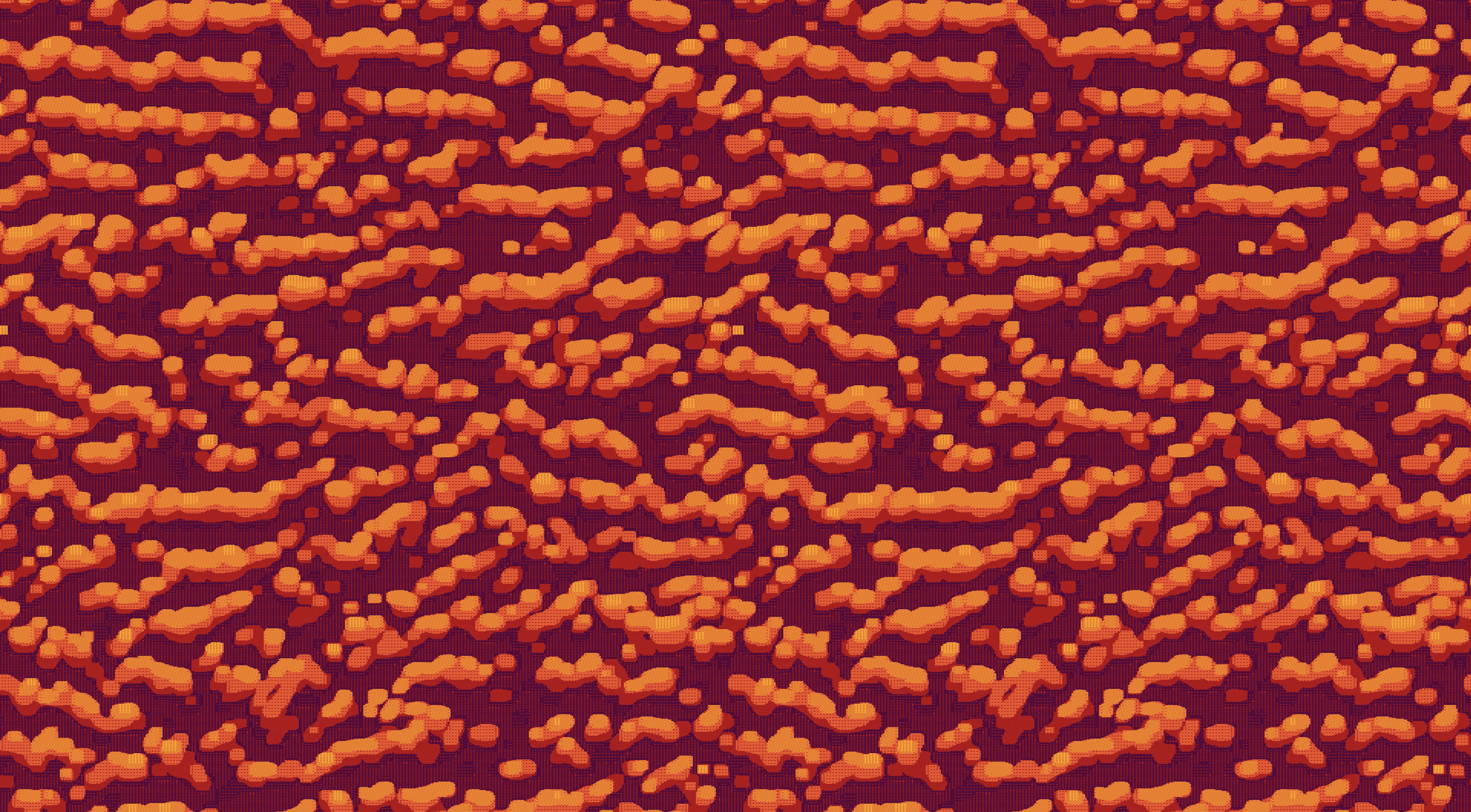
Nicolas Sassoon
LAVA STUDIES
2023
Digital animation (mp4), 3840 x 2160 px
10 seconds, 6 colors, 25 fps
(NFT)
LAVA STUDIES is a collection of digital animations informed by volcanic activity, magmatic motions and lava textures. The artworks use my visual research on moiré patterning as a starting point to generate a new body of work exploring digital abstraction in relation to natural forces. This collection marks a significant departure from the typical aesthetic I use in my abstract work: here the hard-edged optical patterns are replaced by smoother textures, liquid motions and organic shapes evocative of magmatic activity.
Documentation
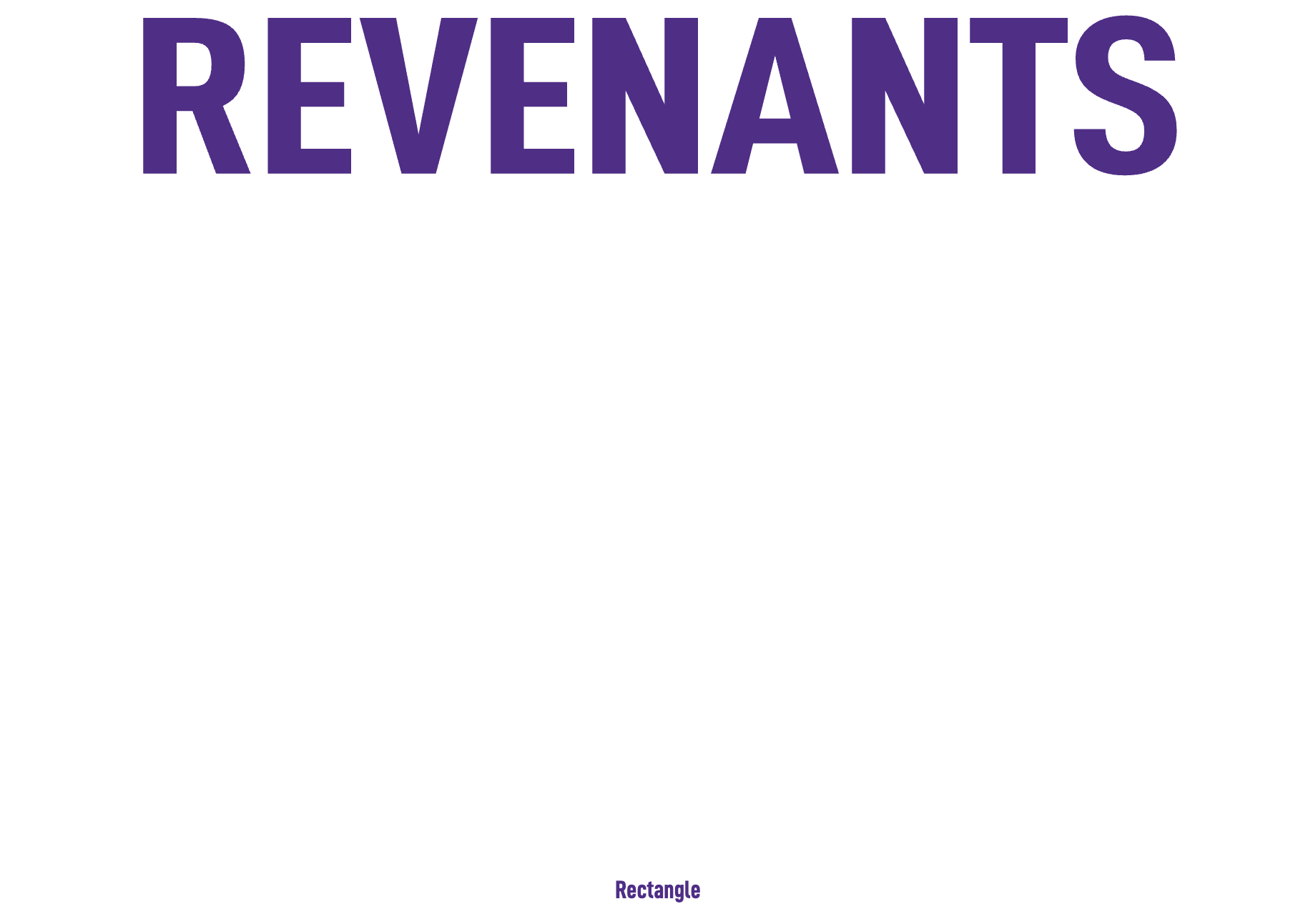
pdf (NFT)
Text : Alexandra Crouwers
Edited by Rectangle
Edition of 300
Artist’s talk with Kelly Richardson
Curated by Charo Neville
CORES
2020
Eight Fragments on Eight Stones
Essay by Elise Hunchuck and Jussi Parikka
more info
Biography
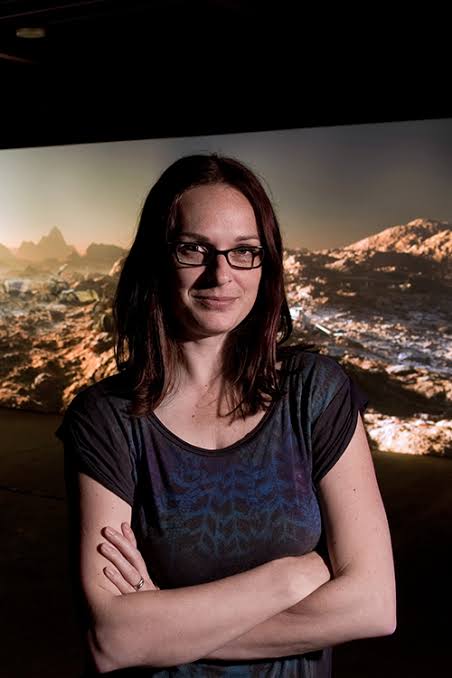
Taking cues from 19th-century landscape painting, 20th-century cinema, and 21st-century planetary research, Kelly Richardson (b. 1972, Canada) crafts video installations and digital prints that offer imaginative glimpses of the future that prompt a careful consideration of the present.
Her work has been widely acclaimed in North America, Asia and Europe. Recent one person exhibitions include NGCA (England), Dundee Contemporary Arts (Scotland), Naturhistorisches Museum Wien (Austria), SMoCA (USA), CAG Vancouver (Canada), VOID Derry (Ireland), and a major survey at the Albright-Knox (USA).
She was selected for the Beijing, Busan, Canadian, Gwangju and Montréal biennales, and major moving image exhibitions including the The Cinema Effect: Illusion, Reality and the Moving Image at the Hirshhorn Museum and Sculpture Garden. Her video installations have been included in the Toronto International Film Festival as part of Future Projections, Sundance Film Festival in New Frontier and she was honoured as the featured artist at the Americans for the Arts National Arts Awards.
Richardson’s work has been acquired into significant museum collections across the UK, USA and Canada, from the Hirshhorn Museum and Sculpture Garden, SMoCA and Albright-Knox Art Gallery to the National Gallery of Canada, Art Gallery of Ontario, Musée d’art contemporain de Montréal, Arts Council Collection (England) and the Towner.
Her video installations have been featured in numerous media including Artforum, The Guardian, BFI Sight and Sound, New Scientist, Time Out London, Aesthetica, British Journal for Photography, CBC, BBC, ITV, Sky News and New York Times.
Kelly Richardson was born in Burlington, Ontario, Canada in 1972. From 2003-2017 she resided in north east England where she was a Lecturer in Fine Arts at Newcastle University. She currently lives and works as a visitor on the traditional territory of the WSANEC peoples of the Coast Salish Nation on Vancouver Island, Canada. She is Professor in Visual Arts at the University of Victoria.
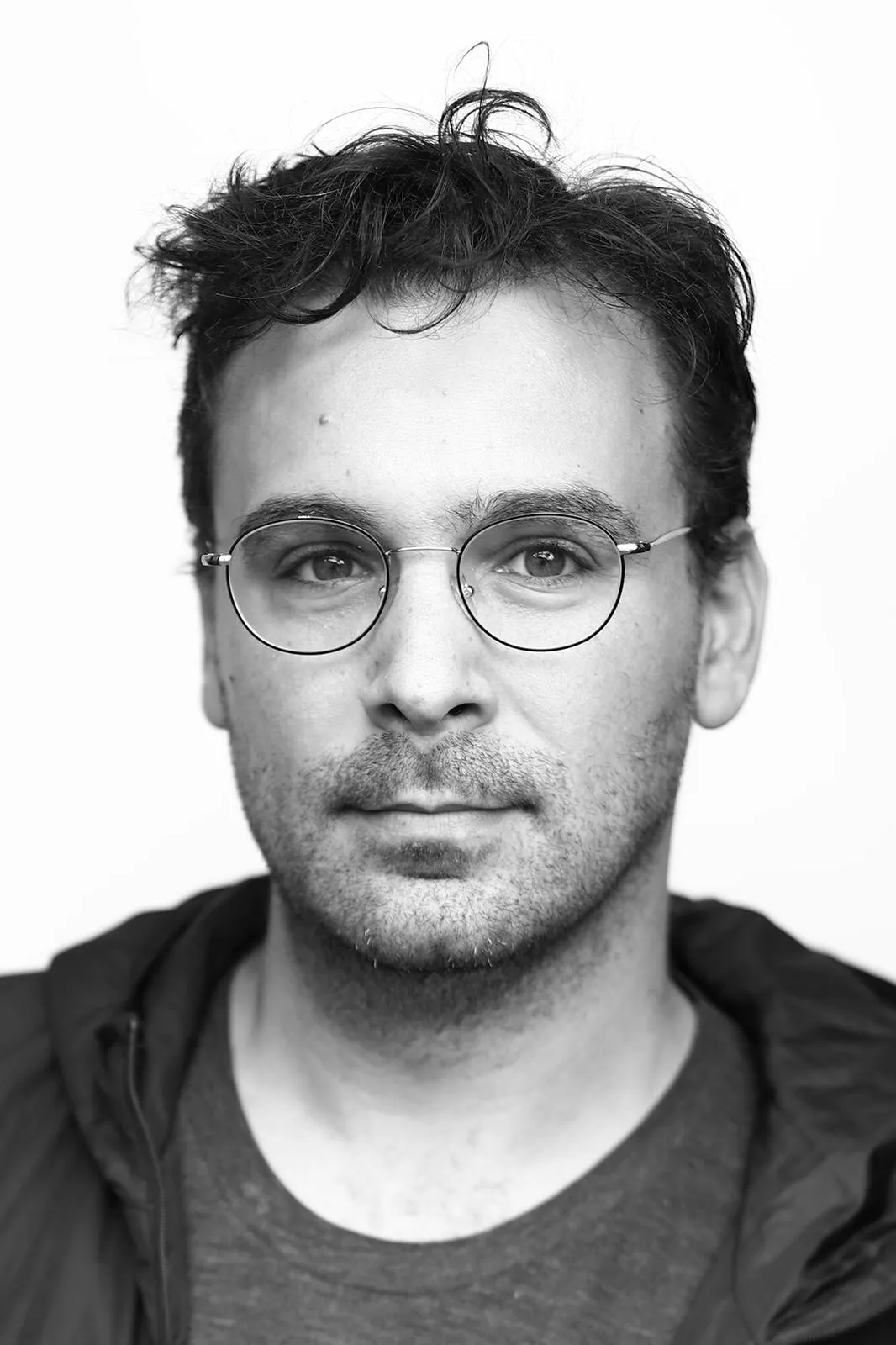
Nicolas Sassoon is a Franco-Canadian artist using early computer graphics to create a wide array of pixelated forms & figures, moiré patterns & architectural structures. His work has long been concerned with the tensions between the pixel and the screen, reflecting on their entanglement and materiality by constraining himself to experiment with pixelated patterns and figures as his sole visual language. This focus on early computer graphics is driven by the sculptural, material and pictorial qualities of this imagery, as well as its limitations and its poetics. A basis of Sassoon’s research centres on digital animations created using a moiré patterning technique; consisting in the overlap of two images to generate optical illusions. This body of work often features abstract animations informed by atmospheric and natural forces. The animations appear on screen as endless hypnotic surfaces, similar to all-over paintings or wallpapers in their composition. The optical properties of these works generate tensions and oscillations in the perception of depth and flatness within the space of the screen. Sassoon’s work also manifests in physical space as sculptures, prints, and monumental projections scaled to the architecture in context, generating experiences adjusted to the human body. At large, Sassoon’s practice relates to many histories of abstraction in painting, optical art, moving image and computer graphics.
Nicolas Sassoon currently lives between Montreal, Canada and Biarritz, France. He is a founder of the collaborative projects SIGNALS and WALLPAPERS. His work has been exhibited at The Whitney Museum of American Art (US), Eyebeam (US), Current Museum (US), Vancouver Art Gallery (CA), Plugin ICA (CA), Contemporary Art Gallery (CA), Charles H.Scott Gallery (CA), Western Front (CA), PRETEEN Gallery (MX), Victoria & Albert Museum (UK), the Centre d’Art Bastille (FR), House of Electronic Arts Basel (SW), Kunsthalle Langenthal (SW), Arti et Amicitiae (NL), MU Eindhoven (NL) , Today Art Museum (CN), Chronus art Center (CN), the Berlin Fashion Week (DE) and the New-York Fashion Week (US).
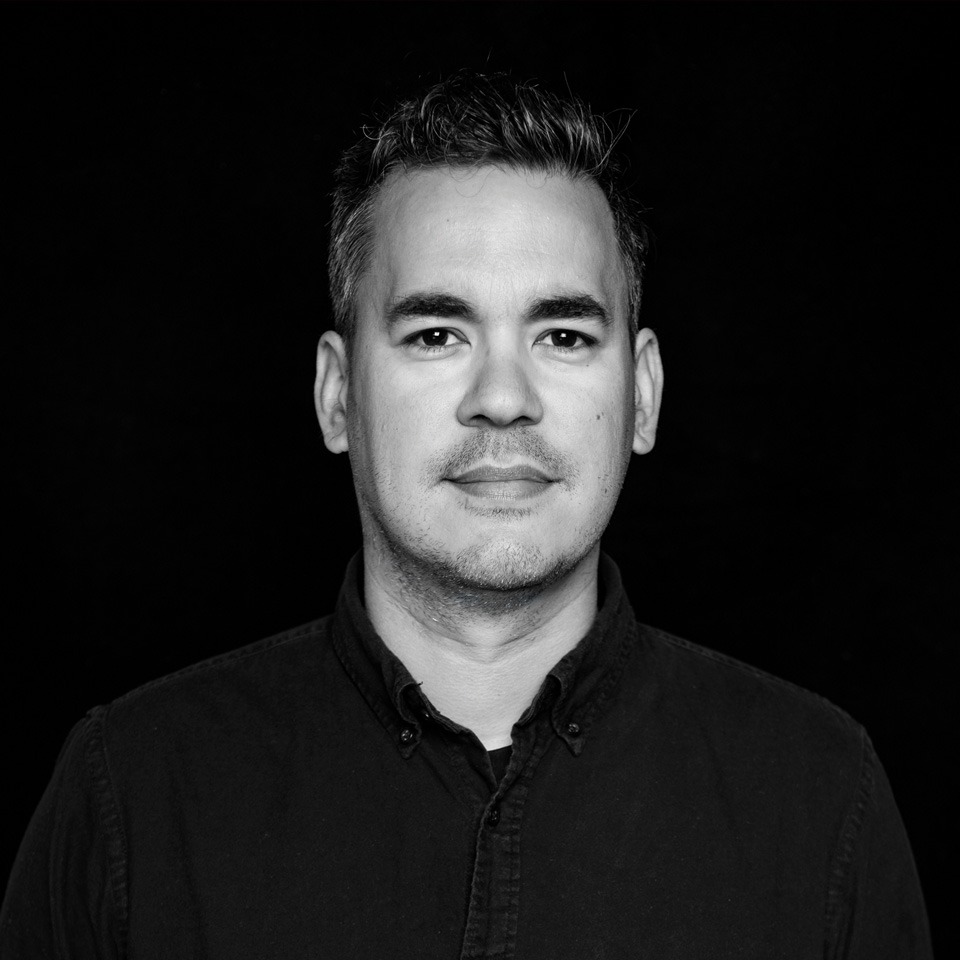
Rick Silva is a Brazilian-American artist who makes experimental 3-D animations that explore virtuality, futurology, and speculative ecologies. His works have been screened and exhibited internationally. Recent exhibitions include Hors Pistes at The Centre Pompidou, and State of the Art at the Crystal Bridges Museum of American Art. His work has been featured in publications such as WIRED magazine and Rhizome’s book Net Art Anthology. Silva lives in Eugene, Oregon, where he is an Associate Professor of Art at the University of Oregon.
